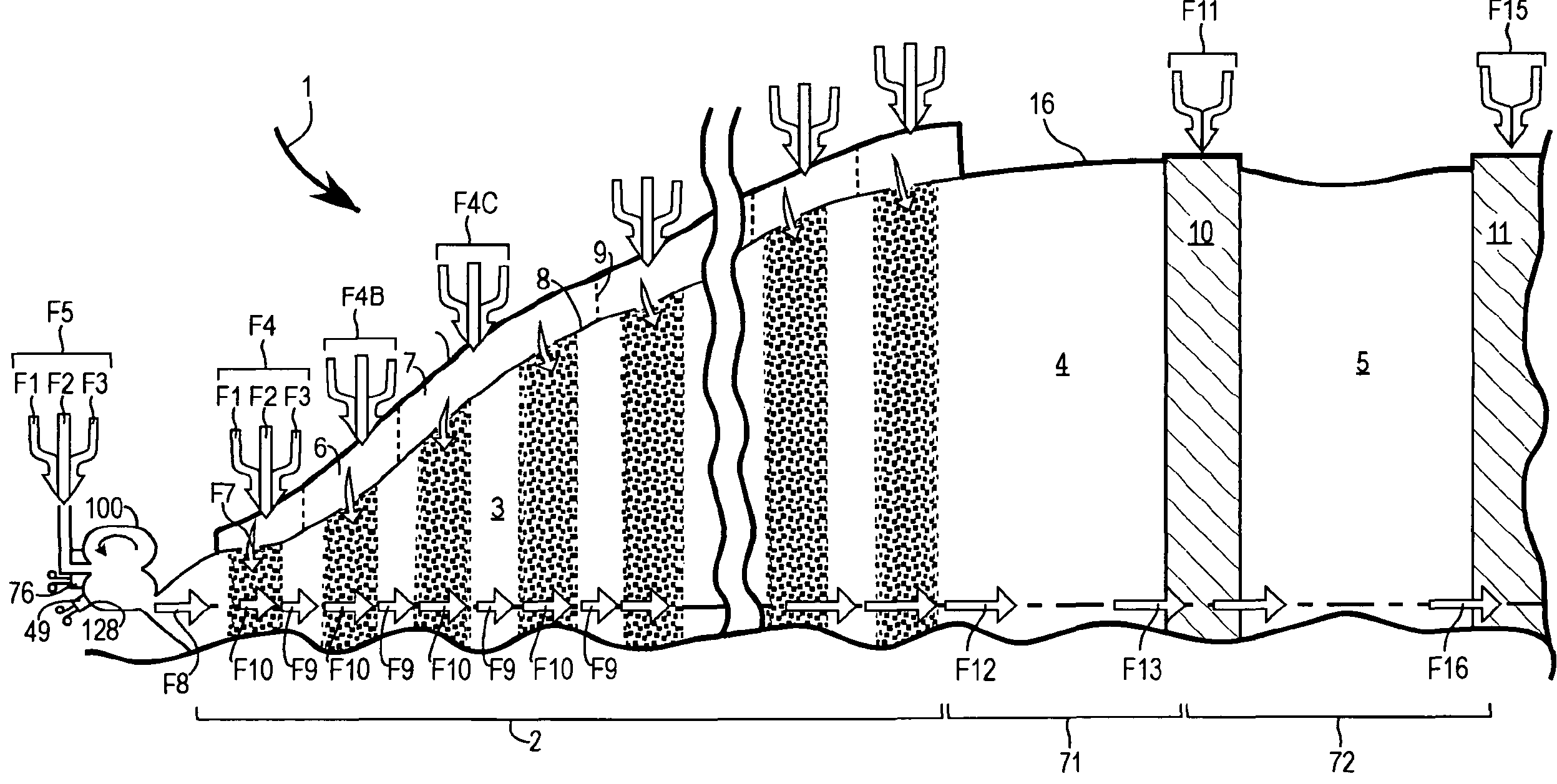Low emissions combustion apparatus and method
a combustion apparatus and low emission technology, applied in the field of apparatus and methods of combustion, can solve the problems of simultaneous undesired increases in co and uhc emissions, increased cost and complexity of controlling overall emissions, and increased co emissions with incremental increases. achieve the effect of stable combustion
- Summary
- Abstract
- Description
- Claims
- Application Information
AI Technical Summary
Benefits of technology
Problems solved by technology
Method used
Image
Examples
Embodiment Construction
[0044]U.S. Pat. Nos. 3,651,641, 5,617,719, 5,743,080 and 6,289,666 to Ginter are hereby expressly incorporated by reference herein. These teach diluted combustion methods utilizing delivery of thermal diluent (such as water) into a combustor to cool the combustion, reducing the use of excess dilution air. This invention further expressly incorporates by reference herein the following US patent applications by Hagen et al.:
[0045]20050056313 Method and apparatus for mixing fluids of Mar. 17, 2005
[0046]20040244382 Distributed direct fluid contactor of Dec. 9, 2004
[0047]20040238654 Thermodynamic cycles using thermal diluent of Dec. 2, 2004 and
[0048]20040219079 Trifluid reactor of Nov. 4, 2004. These applications teach further methods of delivering aqueous diluent with improved control over transverse temperature profiles.
[0049]FIG. 1 is a generalized representative embodiment of a combustor apparatus utilizing the Progressive Combustion and Equilibration methods to control emissions. Th...
PUM
 Login to View More
Login to View More Abstract
Description
Claims
Application Information
 Login to View More
Login to View More - R&D
- Intellectual Property
- Life Sciences
- Materials
- Tech Scout
- Unparalleled Data Quality
- Higher Quality Content
- 60% Fewer Hallucinations
Browse by: Latest US Patents, China's latest patents, Technical Efficacy Thesaurus, Application Domain, Technology Topic, Popular Technical Reports.
© 2025 PatSnap. All rights reserved.Legal|Privacy policy|Modern Slavery Act Transparency Statement|Sitemap|About US| Contact US: help@patsnap.com



